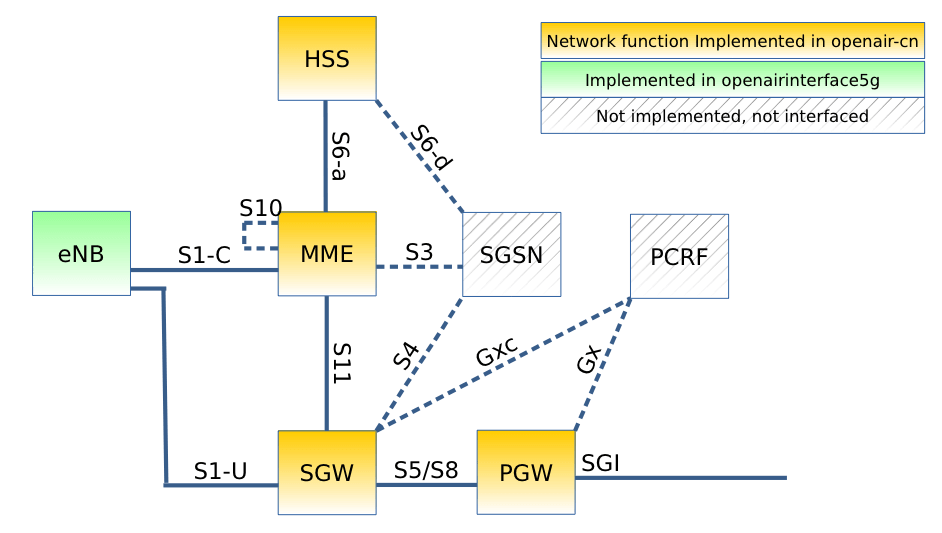Wireless
A Little LTE for You & Me: Build Your Own LTE Network on a Budget

If you’re in a technology role in the cable industry, you’re probably aware that cable is undergoing a tectonic shift from “the future is wired” to “the future is wireless.” Wireless means a lot of things to a lot of people. In the past, wireless meant Wi-Fi if you were talking to a cable nerd. But today, wireless is rapidly shifting to mean mobile, or more specifically 4G LTE and/or 5G. For those of you interested in this wireless future, below, I'll explain how you can build your very own LTE network on a budget.
Time to Tinker
I learn best by doing. Growing up this always terrified my parents. Now that I’ve matured a bit (eh hem), this tendency manifests less as a risk of bodily harm and more as time spent in the lab tinkering. My tinker target as of late has been LTE networks. It turns out there are open source solutions and low-cost parts out there that let you build a simple LTE network (eNB + EPC) for about $1500. I’ve been studying LTE since about 2013, but the last couple of months building and configuring LTE components in the lab have taught me about as much as the prior years combined.
In addition to the great learnings that came from my efforts, we (CableLabs) have ended up with a great tool for research and experimentation. With a cheap and fully open source LTE network we can explore novel use cases, configurations, and deployment architectures, without the need for outside collaboration. Don’t get me wrong, we love collaborating with industry partners here at CableLabs, but it’s great to kick the tires on an idea before you start engaging outside partners. Using this setup, we have the freedom to do just that.
Hardware
The hardware setup is straightforward:
- Two Intel quad-core i7 PCs
- A software-defined radio
- A SIM card
- The UE
An example bill of materials is below. Replacement of any device with a similarly spec’d product from a different manufacturer should be fine (this list is not meant to be prescriptive or seen as an endorsement).

Software
For both machines, we use Ubuntu as our OS. The LTE system software comes from an open source project called Open Air Interface (OAI). This OAI software is broken into two projects:
- The eNodeB (eNB) called “openairinterface5G”
- The evolved packet core (EPC) called “openair-cn”
Figure 1 shows the LTE functional elements included in each project:
Once downloaded and built you get four executables: eNB, HSS, S/PGW, and MME. With my limited Linux chops, it took me a couple of days to get everything happy and running. But for a Linux ninja, even one with limited LTE knowledge, it can be up and running in a day.
For help getting it going, OAI has a great wiki with a bunch of how-to docs and mailing lists that are quite active. In addition to the great docs on the OAI wiki, do some googling and you’ll see many forum posts and how-to sites around the web, e.g., here is a great tutorial for doing EPC + eNB in a single PC.
It largely works. It’s open source, so the stability is ok, but don’t expect weeks of uptime. Also, note the SGW and PGW are a single executable, so the S5/S8 interfaces are not exposed, even though it’s a solid line in Figure 1. Does this limit your plug-n-play interoperability testing a bit? Sure, but overall the solution is tough to beat for the price.
Another thing to watch out for is UE interoperability. Many phones work, for example, the Samsung S7, Moto G4, but others don’t. LTE has many variations on the attach procedure, but not all are supported by OAI’s EPC currently. But again, it’s free! And it supports some mainstream readily accessible phones, which is pretty sweet.
Other Things to Consider
So we discussed the basics, but there are a couple of other bits you need to line up to get everything working:
- Even though this set up is for tinkering, you will need a plan for regulatory compliance if you want to go over-the-air. For example, in the US you’ll need to contact the FCC to apply for a Special Temporary Authority for the frequency of your choice. Alternatively, you can do all of your testing conducted over cables in your lab. In that case, a UE with external antennas becomes really handy, e.g., the Huawei B593 family of products is what we have used (added bonus that it works great with the OAI EPC).
- You will also need to get some SIM cards. SIM cards are wildly more complicated than I ever realized! My best advice is to go to the experts for help. Gemalto is the tier 1 provider. If you are a tier 1 kinda person, maybe start there. We have also found SmartJac to be super helpful. In either case, I advise starting with the OAI default SIM data set. It will make your initial connection efforts that much easier. Once you get that working, if you want to change the details, you can use a SIM editing software from either Gemalto or SmartJac.
Now do something cool!
Now that you are armed with some knowledge, go forth and make some LTE! Post in the comments if you have questions, want to share your project, run into issues, post in the forums I linked to, or on the reflector… you get the idea…
--
We just announced our new TIP Community Lab where engineers will have access to a bevy of state-of-the-art wired and wireless test equipment. Make sure to read my blog post "CableLabs Introduces New Telecom Infra Project (TIP) Community Lab" for more information and subscribe to our blog to find out about future innovations.


